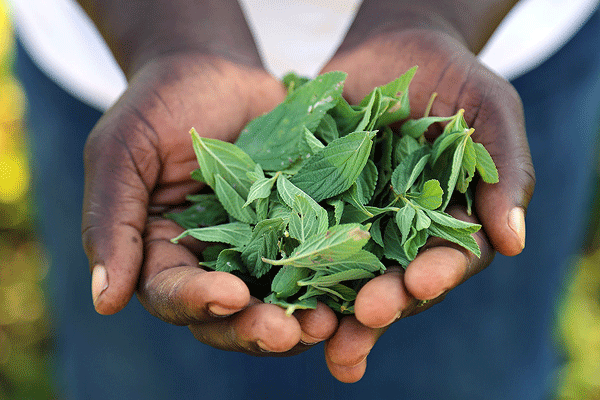
BY MICHAEL BHEBHE
It is my pleasure to tell our own Zimbabwean story about one of our local plants and its benefits.
In my early years as a growing scientist, I realised that if I wanted to find out about our local herbs, I had to dig a little deeper online and, in most cases, had to rely on research done outside Zimbabwe.
My interest in studying natural products, which spans over 12 years, was fostered by three professors Maud Muchuweti, Mudadi Benhura (both biochemists) and Dexter Tagwireyi, a pharmacist and toxicologist.
In my studies I managed to profile bioactive compounds from zumbani extracts, quantified them, and tested them for potential to cause mutation of normal cells and poison the liver.
Zumbani/umsuzwane as it is locally known, is scientifically known as Lippia javanica (Burm f) Spreng.
It is a woody erect shrub which, not only naturally grows in Zimbabwe, but can also be found in other parts of southern, central and eastern Africa. Some studies have reported its existence in the tropical Indian subcontinent.
Zumbani has several beneficial nutritional and medicinal components which make it both food and medicine.
- Chamisa under fire over US$120K donation
- Mavhunga puts DeMbare into Chibuku quarterfinals
- Pension funds bet on Cabora Bassa oilfields
- Councils defy govt fire tender directive
Keep Reading
Plants that are both nutritional and medicinal are called nutraceuticals. Thus, zumbani may qualify as both a recreational and a medicinal caffeine-free tea.
Our laboratory revealed that zumbani is a good source of phenolic compounds which act as antioxidants when consumed.
The types of antioxidants which we found in zumbani are very useful in mopping out toxic chemicals (radicals) which naturally accumulate in the body when it is stressed out by a fever, disease, overthinking or even intense physical exercise.
Radicals should not accumulate in the body, otherwise if left to rise they may lead to detrimental ailments such as cancer, diabetes or a weak immune system.
Our studies indicated that zumbani had higher antioxidant potential than the popular commercial brand rooibos which was on the shelves.
There are multiple classes of phytochemicals found in zumbani which include flavonoids, alkaloids, iridoids and essential oils which contribute to its medicinal properties.
Scientific reviews carried out so far indicate that the plant has a wide range of pharmacological activities, which include antioxidant, antidiabetic, antimalarial, antiplasmodial and pesticidal effects.
Yet at the same time, it has nutritional properties such as amino acids and minerals such as zinc.
In the recent past there has been a growing interest in consuming zumbani tea in Zimbabwe because of its associated respiratory healing properties.
The plant is also known as fever tea because it has been effectively used as an ethnomedicinal cure for fevers and chest-related ailments such as sore throats, coughs, bronchitis, sinuses, pneumonia and asthma.
It is important to emphasise that this is not a prescriptive article to anyone who may have any of the above ailments, but a general report of how the plant has been effectively used in ethnomedicine.
It is encouraged that anyone with a health altering condition first seeks medical attention before they can try alternative means.
Zimbabweans in most cases use zumbani either as dried or fresh leaves brewed into an herbal tea/tisane and drunk as is or in some cases with sugar or honey to taste. It is more beneficial to drink without milk as the milk proteins and fats may mask some of the health beneficial phytochemicals.
There are also some volatile medicinal phytochemicals found in the plant which explains why it has also been effectively used for steaming to clear out nasal passages.
In communal areas where it grows abundantly, it is also commonly used as a mosquito repellent and for treating skin infections because of its antimicrobial properties.
In some parts of Zimbabwe, the leaf ointment is rubbed on the chest and abdomen as remedy for pneumonia.
Despite the fact that the present-day consumer is more aware and concerned about safety issues, toxicological studies on herbal teas from Zimbabwe have been scarce.
If any herbal product, whether tea or otherwise is to acquire global acceptance, the consumer must be satisfied that sufficient enquiry and interrogation has been done with respect to safety and toxicity.
So far in my doctoral studies, I tested zumbani’s potential to harm the liver and kidney if consumed in excess and found that there was no detectable harm to these vital organs.
So far no comprehensive clinical study has been published to confirm zumbani as a solution to the raging coronavirus pandemic.
Most Zimbabweans, who are using it, have latched their hopes on the plant because of its effective respiratory healing properties which have stood the test of time in ethnomedicine.
It would, however, be prudent for Zimbabwean scientists to conduct clinical studies to vindicate circulating claims about the plant’s potential to treat or reduce the onset of the coronavirus disease.
While there is still a need to unravel more magical properties of the plant, medical scientists and agronomists must form collaborative linkages with both local and international partners in order to grow a viable nutraceutical industry in the country.











